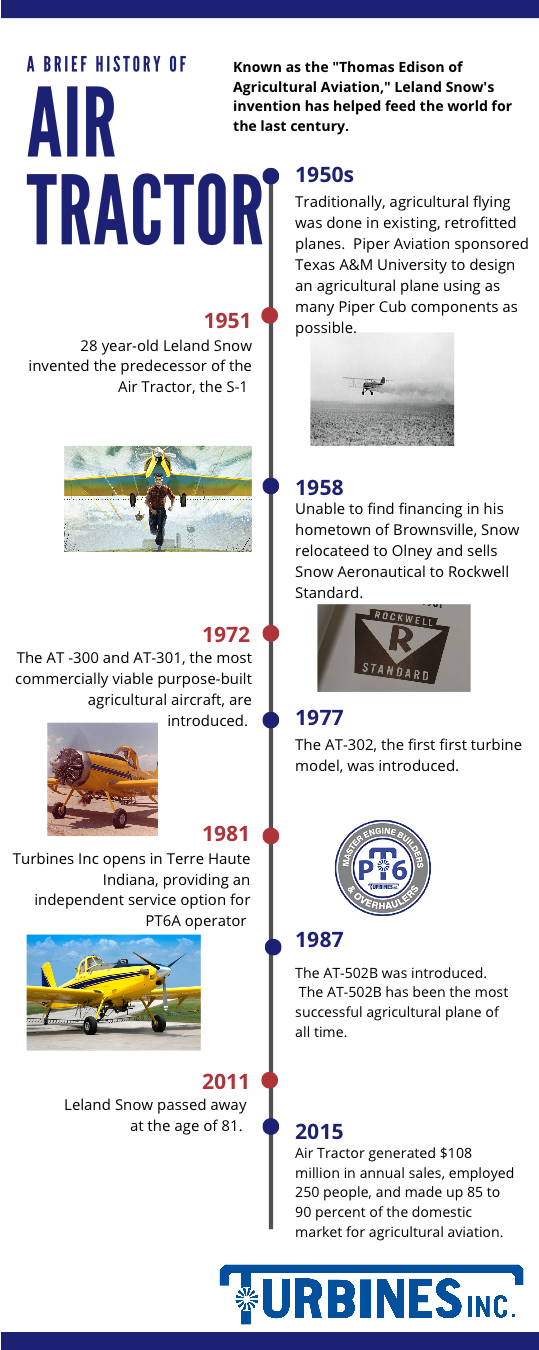The History of the Air Tractor
Leland Snow was known as the “Thomas Edison of Agricultural Aviation.”
Snow was instrumental in the development of two of the most significant agricultural aircraft in history, the Air Tractor and the Thrush.
When Snow began designing aerial application aircraft, the tradition had been to use the AG-3. Piper Aircraft had sponsored Texas A & M University to design an agricultural aircraft that used as many Piper Cub components as possible.
Snow’s designs were purpose-built for agriculture, rather than retrofitting other aircraft.
Snow was 21 when he designed his first aerial application aircraft, the S-1. Introduced in 1951, the plane remained in production until 1957 when it was replaced by the S-2A and S-2B models.
Unable to find financing in his hometown of Brownsville Texas, Snow relocated to an old military airbase in Olney, Texas, and sold Snow Aeronautical to Rockwell Standard. He began the construction of AT-300 in late 1972, which later became the AT-301.
The AT-302, the first turbine-powered model, was introduced in 1977.
Snow resigned from Rockwell Standard and founded the AirTractor company in 1978.
While fixed-wing and rotorcraft have been used in significant aerial applications during the past century, fixed wing aircraft can lift more and have the payload advantage.
Leland Snow's focus was on these design criteria:
- The ability to lift a heavy load from an unpaved strip.
- Endure frequent landings and takeoffs.
- Cockpit structural safety and survivability
- Ample visibility in his description.
- Pressurized and airconditioned cockpit to prevent spray ingestion.
- A tank shaped for easy cleaning, fast loading and provision of easy dumping in case of emergencies.
The Air Tractor AT-502B, was introduced in 1987. This model served as the world's most significant AG plane of all time, with the ideal combination of payload performance.
Powered by the PT6A-34AG engine, this model offered a significant improvement in power and speed. The PT6A engines offered improved insight for pilots and techs into engine performance and minimized the need for costly repairs.
Engine Condition Trend Monitoring (ECTM) identifies subtle changes in an engine's performance, letting the operator and the maintenance team know if any action is required.
Snow passed away in 2011, but the Air Tractor organization continues to be a force in the agricultural industry worldwide.
In 2015, Texas Monthly reported that Air Tractor, generated about $108 million in annual sales, employed 250 people, and makes up 85 to 90 percent of the domestic market for agricultural aviation.

Sources:
https://www.texasmonthly.com/the-culture/great-planes/
https://www.farmcollector.com/farm-life/farmers-airforce-aerial-sprayers-zmrpz20julzbut/
